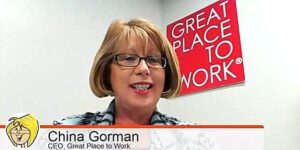
Behavior In Business: 8 Human Insights Leaders Should Know
Successful leaders understand the power of human nature. What do they know about behavior that others can learn?

Successful leaders understand the power of human nature. What do they know about behavior that others can learn?

What sets great employers apart? And what can other organizations learn from the best? Join a timely and important #TChat conversation this week

Remote work isn’t a new concept — but its popularity is skyrocketing. What can employers do to ensure that virtual teams are truly successful?

Telecommuting success isn’t a slam dunk — but the business benefits can be significant. What should employers consider?

Hiring the right talent can be a challenge. But sometimes you get much more than you bargained for — and it’s like striking gold…

Every company has a distinctive organizational culture and “hiring culture.” To improve the impact of your hiring culture, focus on 3 essential elements…

How can companies retain their most innovative employees? And how can those smart minds succeed? It starts by creating value for others

Why and how should established businesses develop a culture of entrepreneurship? That’s the focus this week at #TChat events with Bob Burg…

Statistics show that tapping into the flexible workforce is a smart business move. Why? This infographic illustrates 5 compelling reasons…

What does a future-ready workforce look like? Business collaboration and learning expert Dan Pontefract says it features a special kind of leader
Innovation isn’t magic. It’s the result of a culture designed to encourage fearless pursuit of fresh ideas – and the willingness to embrace failure as part of the process. It comes from conscious effort to gather input from a diverse and dedicated workforce…
Where does innovation begin? What characteristics of workplace culture allow viable ideas to emerge, take root and grow? That’s the focus at TalentCulture forums this week…
Successful talent strategy requires much more than filling open job requisitions. Look closer at your organizational culture — what does it say about your company?
Originally posted by Joe Gerstandt on MonsterThinking Blog Intersections baby, its all about the intersections… The majority of the work that we do around diversity
Sometimes we find zen. A moment of harmonic convergence in our lives when all things family, friends, co-workers, employers, work and life become one. Sometimes.
What’s your role at work – and how is that working for ya? Feedback from the most recent #TChat Twitter conversation among TalentCulture community members…
Organizational analysis – lessons from a human perspective. What a personal medical crisis can teach about organizational culture, performance, and brand humanization…